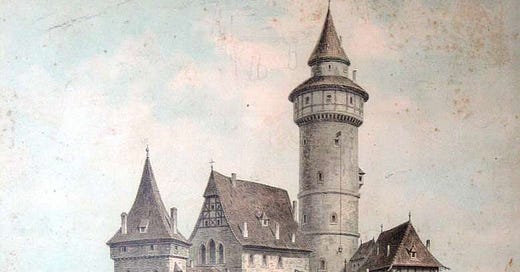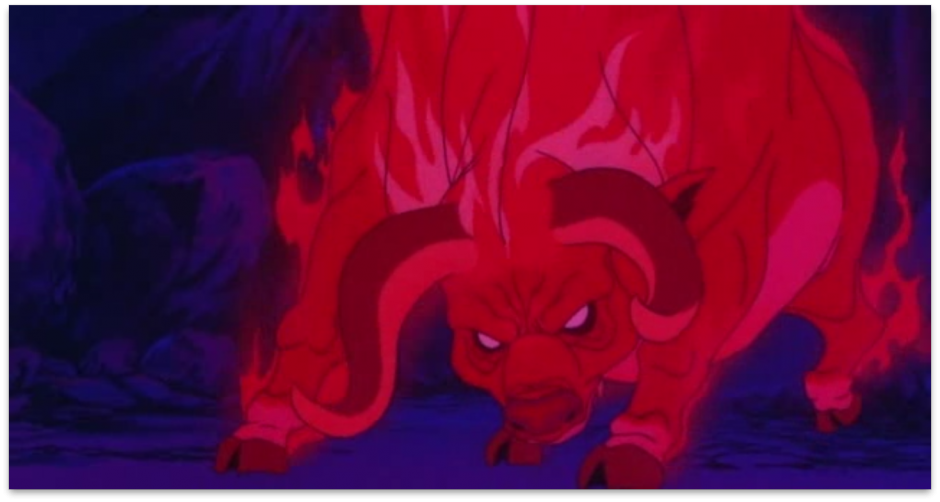To read Building the Perfect Role-Playing Game - Part I, click HERE.
Before we go much deeper, I want to point out that this series assumes everyone is at least familiar with Dungeons & Dragons (D&D) or other popular RPGs. I have and will continue to use terms that require the reader to possess a certain knowledge of table-top gaming vocabulary. Of course, if you have any questions you can certainly leave a comment or send a message.
Here are the issues. My list of major hang ups that, for good or ill, involve fundamental aspects of not just Dungeons & Dragons but most RPGs. They are the issues we will attempt to fix/streamline/improve in our new d20 game system. In no particular order:
Hit Points. There are too many of them. We all know it. It’s been ridiculous for decades now and there’s no sign of it getting much better. D&D’s 3rd Edition and it’s godlike Constitution scores fueled the race in the early 2000s. Now 5th/5.5(th) edition have slowed things down a bit by capping Con scores, but they’ve also increased the size of the Hit Die for several classes. All in the name of ‘balance’ of course (Why should fighters have all the fun). Some RPGs have tried to get a handle on this concept. GURPs and the original Warhammer are two games that don’t pump out characters with hundreds (or even dozens) of hit points. But most fantasy games, tabletop or digital, are driven by the hero sporting three - and sometimes four - digit hit point totals. Falling off a 100’ cliff ends up becoming no big deal. Swarmed by a horde of bugbears? Walk it off. I suppose it’s important from some players to see their 20th level character take a neutron bomb to the face and keep on fighting. But even in a high-fantasy, heroic campaign, adventurers with hundreds of hit points are extremely unrealistic. Gandalf, one of the most powerful beings in Middle-Earth died fighting a Balrog after reminding the rest of the Fellowship that “this foe is beyond any of you”. In other words, a couple of slaps from old ‘Shadow and Flame’ would have killed even Boromir. As they should (Of course, in 3rd edition, Boromir probably had 150hp easily). So, let’s build adventurers who are very strong and capable without making them farcical?
Armor Class: Has this ever made sense? No. And for the past 50 years, not even Dungeons & Dragons - the inventor of Armor Class - has been able to successfully explain why it would. Yes, it’s the number an opponent must roll (including bonuses) to hit their target. Simple enough. But armor, dexterity, magical protection, and even luck all count as the same thing. Sure, back at the dawn of the 21st century, D&D tried to differentiate between the ‘to hit’ AC (striking someone with a weapon) and Touch AC (just being able to touch an opponent regardless of armor). However, that made even less sense. Touch was based on the idea that it’s easier to touch someone than punch them; sometimes ridiculously easier. A character wearing heavy armor and carrying a massive shield might be damn near impossible to ‘hit’ with a weapon because of his AC. But Touch attacks ignore armor. So a 10th level monk trying to hit an evil knight wearing plate armor could, conceivably, have a harder time than a 1st level mage just casting a ‘touch’ spell. Seriously? This doesn’t even begin to touch (no pun intended) on the bizarre idea that plate armor and luck basically constitute the same thing; a character’s ability to avoid getting hit. Yes, I’ve heard the arguments that it’s all in the description. That a good DM will describe a warrior’s armor deflecting a blade thereby indicating a ‘miss’. Or perhaps they parried the attack due to their impressive fighting skills. But why do we put all that on the DM in the first place when the DM has so many other aspects of the game to worry about? Why not simply let the mechanic tell us what happened and let the description tell us the how?
There is, and should be, a difference between defense and armor. Defense is active, the opportunity to avoid damage by not getting hit. Armor, on the other hand, exists to absorb damage when the character is hit. GURPS takes this into account, which is nice. But GURPS incorporates hit locations and other factors that can slow combat down significantly. Of course, one could just throw those other rules out, which I do appreciate about that venerated system. Regardless, this will be a crucial aspect of our new game. I think we can finally make defense make sense.
Combat: Swing/hit, swing/miss, repeat. Can’t we do better that that? I was watching that episode of Game of Thrones where a one-handed Jaime Lannister attacks Brienne of Tarth on a bridge. They trade several sword strikes, clanging off each other’s weapons until Jaime finally gets too tired and they fall in love (hope I didn’t give anything away there). Anyway, it occurred to me - for perhaps the 600th time - that RPG combat should probably be a little more interesting than just “swing/hit, swing/miss”. Sure, it can be exciting when described well, especially when you toss in a couple of fireballs. But the mechanics are overly simplistic and not very realistic, even when implementing a ‘theater of the mind’ approach. Add all the problems with AC into the mix, and it becomes even dumber.
Magic: Here’s a list of spells, here’s what they do. Pick some. Perfectly reasonable. There have been hundreds, if not thousands, of fascinating spells come down the D&D pipeline over that years. And picking pre-made spells was pretty cool, you know, for the first 25 years or so. But shouldn’t there be a little more, well, magic to magic? Raise your hand if you can remember the last time you created a spell? Take your time, the comment section is always open. Since the release of 3rd edition D&D, I’ve created three spells as a player, all for an epic-level character. Of the two editions prior, I created exactly none. There have never been good rules - again, my opinion - for making this happen, but there should be. Making magic is a big part of what fantasy is all about, no?
There’s a scene from the film, ‘The Last Unicorn’, that I first saw when I was 10 years old and will never forget. Schmedrick, the magician, is desperately trying to call forth magic to save the unicorn from the charging Red Bull. He weaves his spell but he has no idea what the magic will do or if it will even work. Though he knows what he wants, he leaves it up to the magic - not that he had much say anyway - to choose its form. It’s a fantastic vision of what spontaneous spellcasting could be. Point being, spell creation should be a pillar of any great magic system. Let’s make that happen.
What do you think so far? Are we on the right track or way off base? What would change about the topics above? Leave a comment or two. We’d love your input!
NEXT TIME…We’ll talk about a more realistic - and fun - initiative mechanic and begin figuring out what to do with all those damnable 5’ steps. Plus, we’ll preview a bit of world-building.
READ Building the Perfect Role-Playing Game - Part III
Combat Art: Methods & Madness
Cover Art: Ritterburg Schulbild






An additional challenge with Hit Points is, like, what are they, actually? People think of them as a measure of damage, but that raises questions about how someone could be damaged to the point of unconsciousness and just sleep it off (in D&D Long Rest healing system). D&D has reframed HP as something like the will to fight—a measure of psychological as well physical endurance–but then that raises questions of how losing the will to fight can kill you. Back in the day Johan Huizinga wrote that one of the features of play is that it is "tense," that is, while we do it for fun, it involves a sense that something is at stake and that there are risks to one's actions. I think HP are way of making RPGs tense—the problem is how to make players feel like their actions and failures have consequences, and thus could lead to their characters' deaths, but not make character death so common and inevitable that people keep losing this chunk of identity they've invested themselves in.